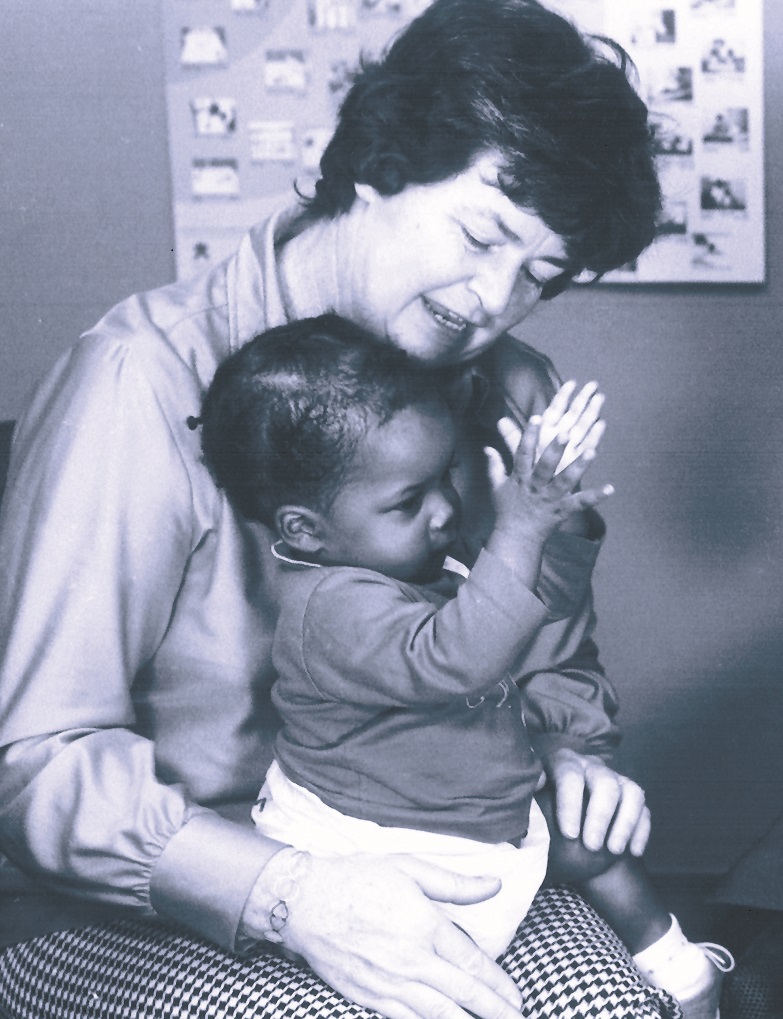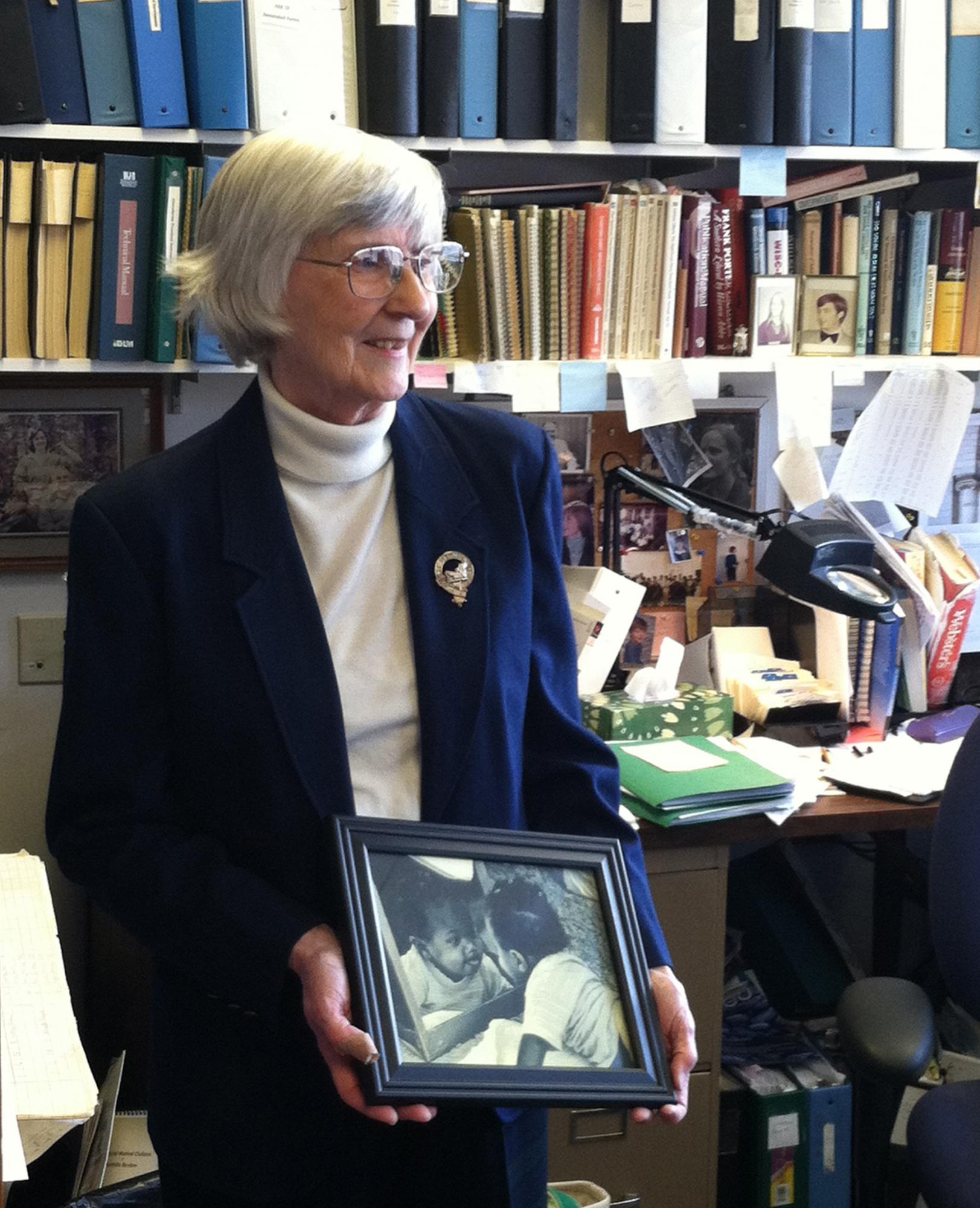The Abecedarian Project: How FPG Demonstrated the Power of High-Quality Early Education
As part of our continuing celebration of FPG's 50th anniversary, this story chronicles the most famous study of early care and education: FPG's Abecedarian Project.
![]() In the early 1970s, FPG launched an innovative project with an odd-sounding name—and the project never ended. It would become the most famous longitudinal study of early care and education, firmly establishing the foundation for FPG’s reputation for rigorous and pioneering research. In fact, over four decades later, a Nobel laureate would peruse its latest data and tout the study’s newest groundbreaking findings.
In the early 1970s, FPG launched an innovative project with an odd-sounding name—and the project never ended. It would become the most famous longitudinal study of early care and education, firmly establishing the foundation for FPG’s reputation for rigorous and pioneering research. In fact, over four decades later, a Nobel laureate would peruse its latest data and tout the study’s newest groundbreaking findings.
Craig T. Ramey originally expanded FPG’s child care research into the Abecedarian Project, which drew its name from the adjective meaning “rudimentary” or “fundamental”—as simple as the ABCs—and from the noun meaning “a person who is just learning.” Over the years, “Abecedarian” would become synonymous with positive, long-term effects of high-quality early care and education, particularly with regard to the power of early intervention to surmount some of the disadvantages of poverty.
The Abecedarian Project represented a revolutionary approach in early childhood education. It differed from other childhood intervention projects because it began in early infancy and exposed children in poverty to a high-quality child care setting for five years—the entire period from birth through school entry—instead of the shorter durations typical of other projects.
 The original study was a randomized trial to examine the extent to which intensive early childhood education could overcome the odds of developmental delays and academic failure for children born into low-income families. Using an experimental design, researchers recruited 111 at-risk children from families in Orange County, North Carolina. Although ethnicity was not a selection criteria, most children were African American and born between 1972 and 1977.
The original study was a randomized trial to examine the extent to which intensive early childhood education could overcome the odds of developmental delays and academic failure for children born into low-income families. Using an experimental design, researchers recruited 111 at-risk children from families in Orange County, North Carolina. Although ethnicity was not a selection criteria, most children were African American and born between 1972 and 1977.
In addition to receiving their health care on-site from staff pediatricians, children benefited from stable and predictable early childhood experiences, attending a high-quality child care center for five years, five days a week, year round. They received an innovative program of educational experiences, the “Abecedarian Approach,” comprised of four key elements: language priority, conversational reading, enriched caregiving, and a game-based curriculum. Researchers designed the early childhood educational activities to support age-appropriate development across the infant, toddler, and preschool years.
In creating the program, researchers shaped their activities as playful back-and-forth exchanges between adult and child. “I had picked up on the game idea and decided it was a good way to make an educational program,” said Joseph Sparling. Sparling originally helped plan and administer the Abecedarian program, and with the curriculum’s co-creator Isabelle Lewis (left), he considered the milestones of child development, the findings of developmental research, and especially the developmental concepts of psychologist Lev Vygotsky.
“We also tried to make the games fun,” said Sparling, “so that the adults would keep using them.”
Sometimes the games integrated traditional activities, such as peekaboo. Each child had an individualized prescription of games, and as children aged their activities became more conceptual and skill-based. Although the games focused on social, emotional, cognitive, and physical areas of development, they gave particular emphasis to language.
 “We told the teachers that every game is a language game,” said Sparling. “Even if the activity focused mostly on motor skills, the teachers still needed to talk to the children and to elicit age-appropriate language from them.”
“We told the teachers that every game is a language game,” said Sparling. “Even if the activity focused mostly on motor skills, the teachers still needed to talk to the children and to elicit age-appropriate language from them.”
But could this approach actually work?
Researchers took the games into the nursery or classroom for formative evaluation, testing the curriculum and producing 200 successful games. In 1978, they published the curriculum as the LearningGames® book series— the first scientifically validated infant and toddler curriculum— and within five years, over 100,000 copies had sold. Today, the Creative Curriculum LearningGames ® series still comprises 200 games in five volumes and finds wide use in preschools, group day cares, family day care homes, parent groups, and home visitation programs.
Researchers also followed the participating children well into adulthood, assessing them at age 5, 8, 12, 15, 21, 30, and 35—and currently are doing so at age 40. Through age 15, I.Q. scores for the children who received the birth-to-age-5 Abecedarian intervention were higher than those of the randomly assigned control group. The children receiving the Abecedarian Approach on average also scored higher on achievement tests in math and reading during their elementary and secondary school years. In addition, they had lower levels of grade retention and fewer placements in special education classes.
Frances Campbell, who was with the project from the start, took over from Ramey as principal investigator midway through the age 15 follow-up study and since then has served as principal investigator. At age 21, the group who had received the Abecedarian intervention had maintained statistically significant advantages both in intellectual test performance and in scores on academic tests of reading and mathematics, and they also had attained more years of education. In addition, recipients of the Abecedarian curriculum were more likely to attend a 4-year college or university, more likely to be in school or to have a skilled job, or both. They also were less likely to be teen parents, less likely to smoke marijuana, and less likely to report depressive symptoms, when compared to the control group. At age 30, the treated group was more likely to hold a bachelor’s degree, have a job, and delay parenthood, among other positive differences from their peers. At age 35, they also were more likely to be in better health.
 The Abecedarian Project also brought unmistakable advantages for the teenage mothers with children in the treatment group receiving fulltime educational child care. By the time their children were 4½ years old, these mothers were more likely to have finished high school and undergone post-secondary training, more likely to be self-supporting, and less likely to have more children. Additional training, employment experience, and education led to increased earnings and decreased reliance on social assistance, all of which were important factors when independent economists calculated cost-benefit ratios for the project.
The Abecedarian Project also brought unmistakable advantages for the teenage mothers with children in the treatment group receiving fulltime educational child care. By the time their children were 4½ years old, these mothers were more likely to have finished high school and undergone post-secondary training, more likely to be self-supporting, and less likely to have more children. Additional training, employment experience, and education led to increased earnings and decreased reliance on social assistance, all of which were important factors when independent economists calculated cost-benefit ratios for the project.
The economic benefit was clear. For every dollar spent on the program, taxpayers saved much more as a result of participants’ higher incomes, less need for educational and government services, and reduced health care costs. In short, the project has demonstrated that high-quality, enriched early education environments can help children and parents surmount some of the disadvantages of poverty. Not only can the effects be far-reaching as children progress through adulthood, but the long-term savings to society also are considerable.
And profound recent findings suggest that the benefits to people who receive high-quality education and care and to society at large may be even more comprehensive than research previously has shown. With substantial implications for health care and prevention policy around the globe, the project’s 2014 study in Science reported that children who received Abecedarian early care and education from birth until age 5 enjoyed better physical health in their mid-30s than peers who did not attend the child care program.
 The findings are the result of FPG’s collaboration with researchers from University College London and the University of Chicago, where Nobel Prize winner James J. Heckman spearheaded an intricate statistical analysis of data from the project. Not only did FPG scientists and Heckman’s team determine that people who had received high-quality early care and education in the 1970s are healthier now, but significant measures also indicate better health lies ahead for them.
The findings are the result of FPG’s collaboration with researchers from University College London and the University of Chicago, where Nobel Prize winner James J. Heckman spearheaded an intricate statistical analysis of data from the project. Not only did FPG scientists and Heckman’s team determine that people who had received high-quality early care and education in the 1970s are healthier now, but significant measures also indicate better health lies ahead for them.
“To our knowledge, this is the first time that actual biomarkers, as opposed to self reports of illnesses, have been compared for adult individuals who took part in a randomized study of early childhood education,” said Campbell. “We analyzed actual blood samples, and a physician conducted examinations on all the participants, without knowing which people were in the control group.”
“This study breaks new ground in demonstrating the emergence of the relationship between education and health,” said Ramey, who now serves as a professor of pediatrics and a distinguished research scholar at the Virginia Tech Carilion Research Institute. “It broadens our understanding of the power of high-quality early experience to change lives for the better.”
 The new study determined that people who received early care with the Abecedarian program have lower rates of prehypertension in their mid-30s than those in the control group. They also have a significantly lower risk of experiencing coronary heart disease (CHD)— defined as both stable and unstable angina, myocardial infarction, or CHD death—within the next 10 years.
The new study determined that people who received early care with the Abecedarian program have lower rates of prehypertension in their mid-30s than those in the control group. They also have a significantly lower risk of experiencing coronary heart disease (CHD)— defined as both stable and unstable angina, myocardial infarction, or CHD death—within the next 10 years.
Compared to the control group, males treated in the Abecedarian program had lower incidences of hypertension in their mid-30s. In addition, treated men less frequently exhibited combinations of both obesity and hypertension, and none exhibited the cluster of conditions known as “metabolic syndrome,” which is associated with a greater risk of heart disease, stroke, and diabetes.
“It is of particular significance that an early educational intervention produced long-term health effects,” said Sparling.
Campbell (left) said many factors might have contributed to the sustained and substantial health benefits now seen for study participants in their mid-30s: more intensive pediatric monitoring, improved nutrition, a predictable and less stressful early child care experience, and improved adult education. Even without pinpointing a single mechanism responsible for improved adult health, scientists involved in the Abecedarian effort agree that early childhood interventions are an encouraging avenue of health policy to explore.
 “Good health is the bedrock upon which other lifetime accomplishments rest, and without it, other gains are compromised,” said Campbell. “Investing in early childhood programs has been shown to pay off in ways we did not anticipate 40 years ago when the Abecedarian study was founded.”
“Good health is the bedrock upon which other lifetime accomplishments rest, and without it, other gains are compromised,” said Campbell. “Investing in early childhood programs has been shown to pay off in ways we did not anticipate 40 years ago when the Abecedarian study was founded.”
#FPG50
--DS
